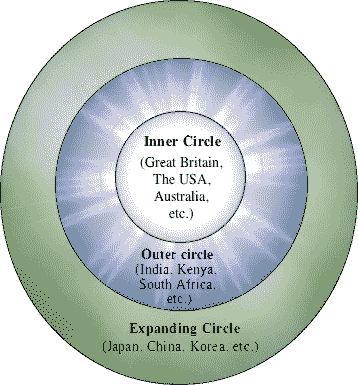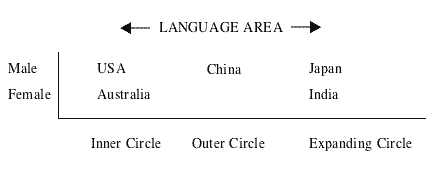
Figure 1. Three circles of English usage as suggested by Crystal (1997)
|
MEXT-authorized English textbooks: Designing a junior high school text series by Thomas Hardy (Keio University) |
|
Abstract Keywords: junior high school textbooks, EFL textbook development, MEXT-approved textbook structure, educational textbooks in Japan |
[ p. 12 ]
Before beginning to compose something, gauge the nature and extent of the enterprise and work from a suitable design. Design informs even the simplest structure, whether of brick and steel of or prose. You raise a pup tent from one sort of vision, a cathedral from another. (p. 101)
| "The [Japanese Ministry] requirements . . . are complex, detailed, and, based on the comments of writers and editors, more than occasionally opaque." |
[ p. 13 ]
[ p. 14 ]
Textbook design: approaches and responses[ p. 15 ]
[ p. 16 ]

[ p. 17 ]

[ p. 18 ]
| "design is the backbone on which successful language textbooks are built" |
[ p. 19 ]
[ p. 20 ]